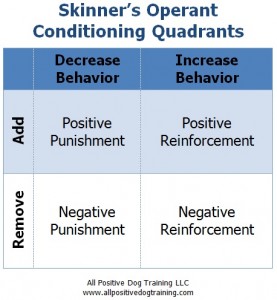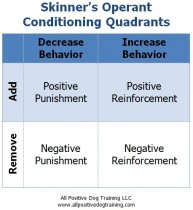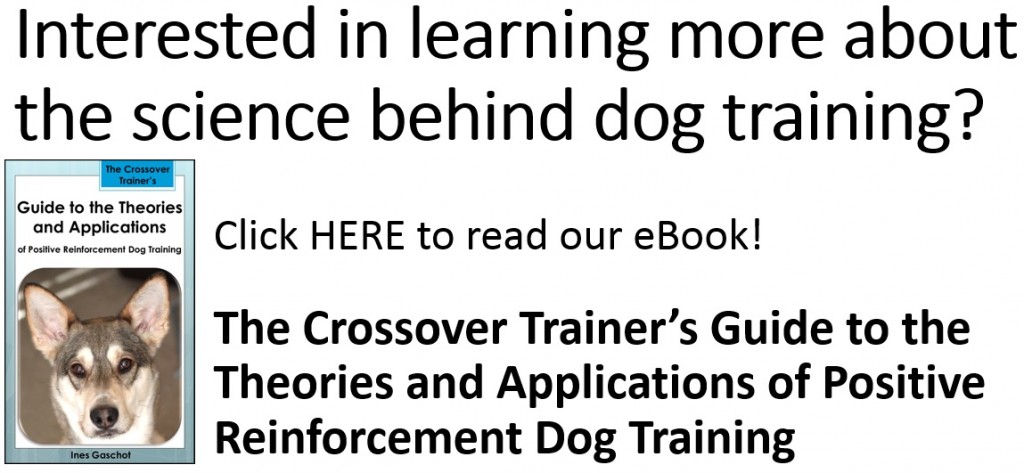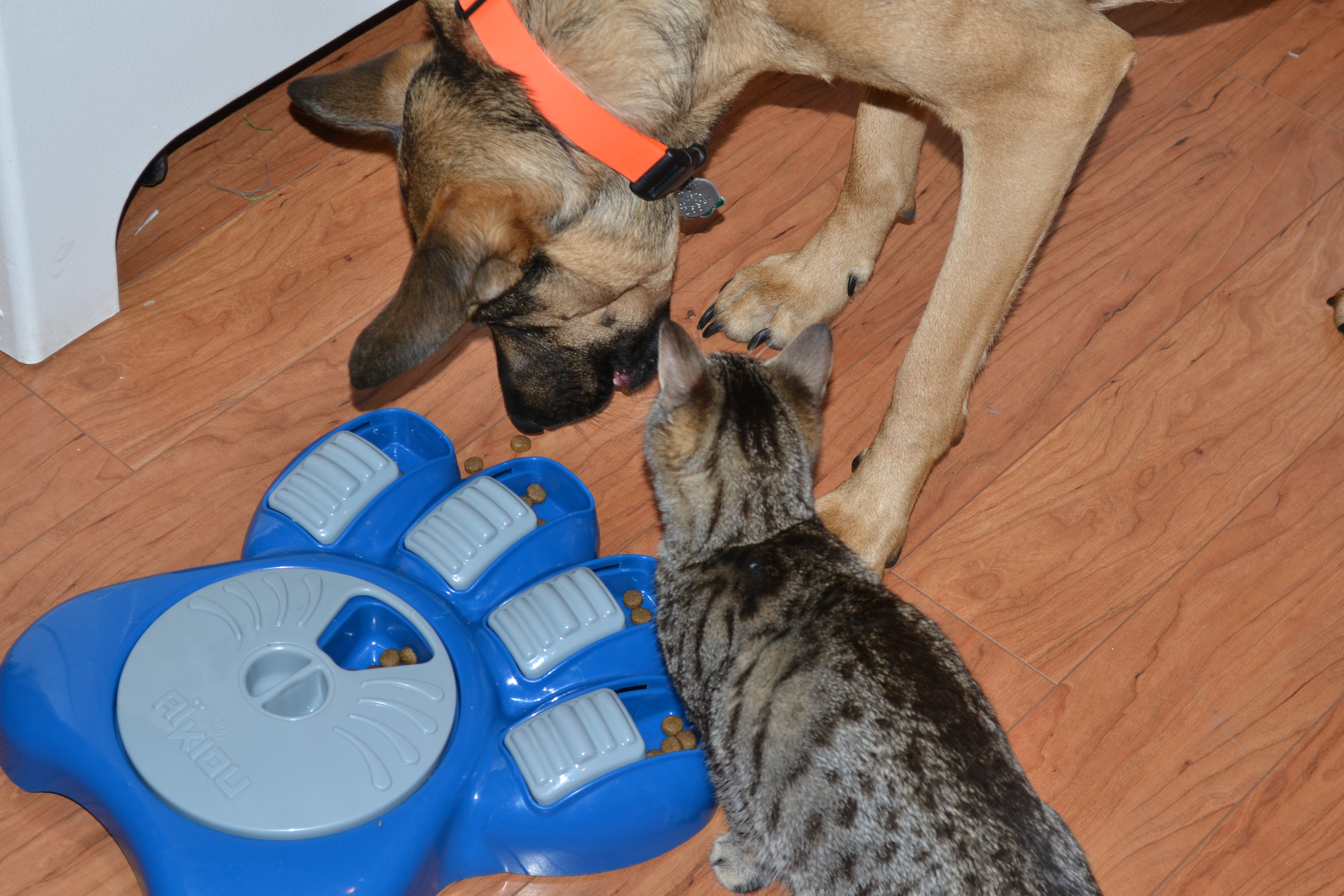In general, there is a lot of confusion (even between professionals) as to what Skinner’s operant conditioning quadrants are all about. I am dedicating the next four blog posts to Skinner and the knowledge he contributed to learning theory.
 B.F. Skinner was a scientist who “believed that the best way to understand behavior is to look at the causes of an action and its consequences. He called this approach operant conditioning.” (Simply Psychology) Skinner’s learning theory quadrants are a big influence in behavior analysis. Operant conditioning is about the consequences of a behavior. (Operant conditioning is about the history of a behavior and what that behavior has produced in the past.)
B.F. Skinner was a scientist who “believed that the best way to understand behavior is to look at the causes of an action and its consequences. He called this approach operant conditioning.” (Simply Psychology) Skinner’s learning theory quadrants are a big influence in behavior analysis. Operant conditioning is about the consequences of a behavior. (Operant conditioning is about the history of a behavior and what that behavior has produced in the past.)
There are four quadrants in Skinner’s Quadrants:
- Positive Punishment
- Negative Punishment
- Positive Reinforcement
- Negative Reinforcement
Lets start with my least favorite – positive punishment. Before I “crossed over” to positive methods, positive punishment was what I used the most. Positive punishment can be broken down to this:
- “Positive” – adding something
- “Punishment” – reducing the frequency of that behavior
So positive punishment is adding something that will lower the occurrence of that behavior in the future.
Since operant conditioning relies heavily on the history of a behavior and it’s consequences, punishment will need to continue through out the dog’s life to keep the frequency of a behavior down. If the consequences change (i.e. you remove the punishment), the behavior will begin to occur more frequently again.
One thing I’d like to mention about positive punishment is that if the dog is reacting to or expressing anxiety about a scary object, animal, or human (in the dog’s eyes), positive punishment will decrease that behavior, but it will not change the emotional response inside the dog. The stress hormones will still be there (i.e. their physiological response to something scary will still be there), but the outward response will be suppressed. While the dog may not act the same towards a scary stimulus, it will still be just as terrified of it.
(Stay tuned for the positive reinforcement part of this series so you can learn how to change your dog’s emotional response.)





